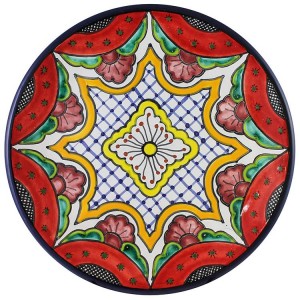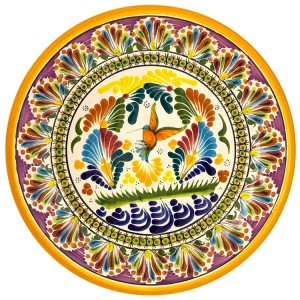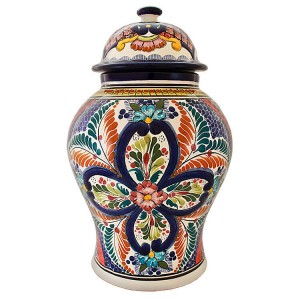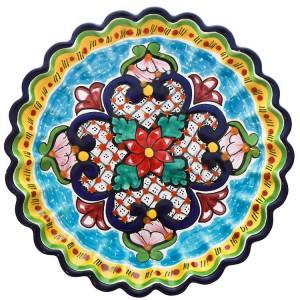When creating a southwest Mexican rustic home decor, talavera pottery can add a gorgeous finishing touch. Talavera pottery plays an important role in Mexican decor because of the unique styles, colors and designs of each creation. Your home will be the talk of the neighborhood and no one has to know you didn’t pay a fortune. Here’s some information about talavera pottery and ways you can use it for home decoration.
Talavera pottery is created with majolica earthenware, which is a type of ceramic that is glazed and white in color. The pottery was introduced to Mexico by Spaniards. It is used to decorate many patios, commercial and residential buildings, social and business squares, and even homes in Mexico.
A city in Mexico called Puebla was established in 1531 and almost immediately became the center of earthenware production. Today, the pottery is still being made with the same techniques that were used during the 16th Century, and it is the oldest tin-glazed ceramic in America.
Talavera Products for Home Decor
When shopping for talavera pottery, you must think out of the box. Look around for a variety of products, such as talavera plates, jars, pots, vases and religious figurines. You can create a southwestern decor in every room of your home using various types of pottery. Talavera pottery can be placed in room corners on the floor or next to pieces of equipal furniture such as sofas, chairs or floor lamps. Add Talavera plates to your kitchen hutch or China cabinet display along with Mexican glassware (such as blue rim margarita drinking glasses).
On the patio, use colorful outdoor equipal patio furniture along with talavera planting pots. These look lovely on wood, brick or stone patios…whatever fits your style. Hang a relaxing hammock nearby and complete your yard decor with matching bird feeders and birdhouses, garden statues (with Mexican flare), fountains and stepping-stones!
Buy pottery products to match your other southwest home decor items in color and theme. This will give every room a true southwest Mexican rustic home decor. You can buy authentic or imitation talavera pottery. Either way, make sure you’re getting quality items and buy only from a reputable retailer. There are many websites offering pottery, but beware of those that don’t guarantee the quality of their products. Also, look for other great items such as rustic sconce light covers and Mexican tin mirrors. These make great gifts for anyone that appreciates Mexican decor. You’ll want a beautifully crafted piece that will last for many years!




